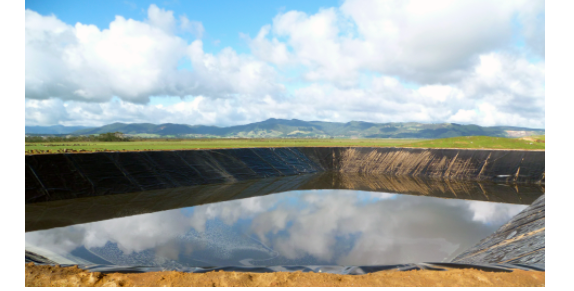- Understanding the Role of Geomembrane Liners in Waste Management
- Innovations in Geomembrane Liners for Water Management
- Geomembrane Liners: A Comprehensive Guide
- The Future of Geomembrane Liners in Civil Engineering
- Geomembrane Liners: Enhancing Landfill Stability
Manager:
WhatsApp:+86 177 0135 2670
Tel:+86 177 0135 2670
Email:marketing@okorder.com
Address:3rd Floor, No.2 Building, No.1 Sanlihe Road
"Geomembrana para Pisicultura: A Safe Haven for Sustainable Aquaculture"
In the fast-paced world of aquaculture, where water management and creation of optimal aquatic conditions is everything, geomembrana para piscicultura (geomembrane fish farming) has become one of the most important components. This versatile and sturdy material does more than ensure water bodies remain intact but also forces an enclosed environment that is healthful to the aquatic lives. This article gives a comprehensive and personal account on how our approach to sustainable aquaculture has been made different by the use of geomembrane.
The Impenetrable Shelter: The Role of Geomembrane in Aquaculture
In any form of agriculture, as well as in aquaculture, it is essential to maintain a specific climate for organisms living there. The geomembrana para piscicultura works like an impervious shelter which prevents water from penetrating while acting as a barrier against pollutants that could be harmful to aquatic life found within such farms.
An Effective Containment Solution
Among its advantages in fish farming, geomembranes are good at preventing water seepage. This saves water resources that are otherwise scarce while maintaining pond environment stable and free from contaminants.
Protection Against Contaminants
Furthermore, geomembranes also serve as barriers against contamination that can spoil the growth and health of fish or any other aquatic organism in them. It keeps off dangerous chemicals, soil particles, unwanted microorganisms like algae among others that may harm fishes or other aquatic species.
Applications of Geomembrane in Fish Farming
The use of geomembranes in aquaponics is diverse ranging from synthetic fish ponds to man-made lakes and reservoirs.

Pond Liners for Fish Farms
Fish ponds are often lined with geomembranes which provide a smooth clean surface that facilitates easy maintenance while minimizing risks associated with seepage and contamination. In addition to contributing to healthier fish growth, this makes it easier to manage the pond environment.
Artificial Lakes and Reservoirs
These structures can be used to construct artificial lakes and reservoirs in large-scale aquaculture operations. Here, there is plenty of water for different kinds of water animals.
Shrimp and Crustacean Farming
For shrimp and crustacean farming, where clean water conditions and temperature are important for the organisms’ health as well as their development, having such controlled environment is extremely beneficial.
The Installation Process: A Meticulous Affair
In aquaculture settings, the installation of geomembranes involves great attention to detail in order to ensure that the liner lasts long enough and performs its intended function.
Site Preparation
This is done before installation of a geomembrane in an aquaponics setup. This entails leveling the ground, removing any debris present on site and making sure that surface is smooth so that no damage occurs when geomembrane comes into contact with it.
Laying the Geomembrane
Once site preparation has been done, unfold or unroll carefully laid out sections of geomembrane over your area. It is important to make certain that your membrane lies flat on top covering everything without leaving any gaps where it may break down.
Sealing the Seams
There should be a watertight barrier along these seams of a geomembrane. Ordinarily, welding equipment designed specifically for this purpose melts edges together thereby creating a strong bond between them.
The Future of Geomembrane in Aquaculture
With the rapid expansion and changes occurring within the aquaculture sector, it is expected that geomembranes will play a more vital role in fish farming. There are more improvements to be anticipated from material technology and installation methods that will make geomembranes even better.
Innovations in Material Technology
In future, new materials technology could result into geomembranes with better properties such as enhanced resistance to UV rays or increased elasticity. Such developments might also enhance the strength and performance of aquaculture geomem-brane applications.
Sustainable Aquaculture Practices
The use of these membranes supports the broader objectives for sustainable aquaculture. Not only do they help make fish farming processes much more controlled and efficient, but they also add to the overall sustainability of this industry.
Conclusion: The Integral Role of Geomembrane in Aquaculture
In conclusion, a geomembrana para piscicultura offers practical and dependable water retention and environmental protection solu-tions for the aquaculture industry. As the industry continues to change and develop at a fast pace, they may become even more popular with greater utilization thus ensuring global aqua-culture remains sustainable and prosperous in future.
This journey has been one of innovation, adaptability and a commitment to sustainability by way of use of geomembrana para piscicultura. These are actions that we are not just seeing a product; but rather an investment into next generation aquatic farming future prosperity. While price per square meter varies for different types of geome-mbranes used in aqua-farming, their value can never be measured altogether. Let us all praise this geomembrana para piscicultura for its contribution towards improving our aquatic eco-systems’ well-being as well as wealth.
- Previous:Navigating the Landscape: Precio de Geomembrana por M2
- Next:The Price of Geomembrane Tanks: Bringing to Light the Real Cost of Tanques de Geomembrana Precios






